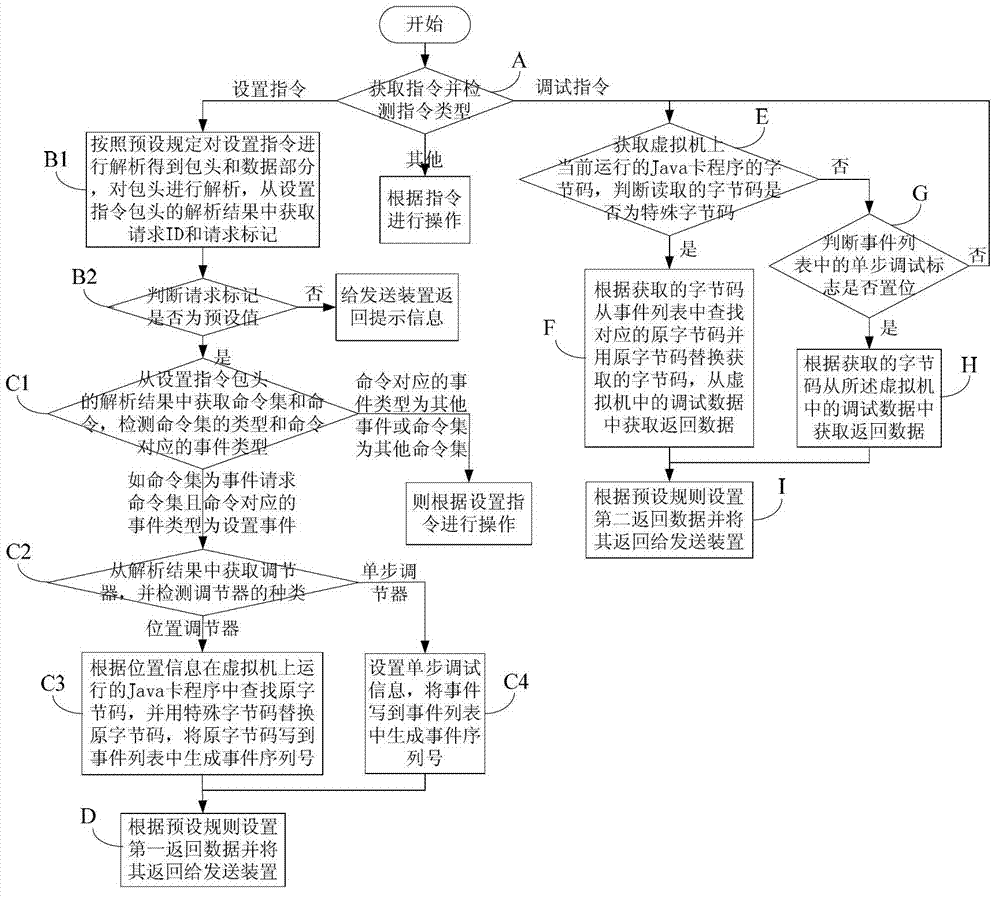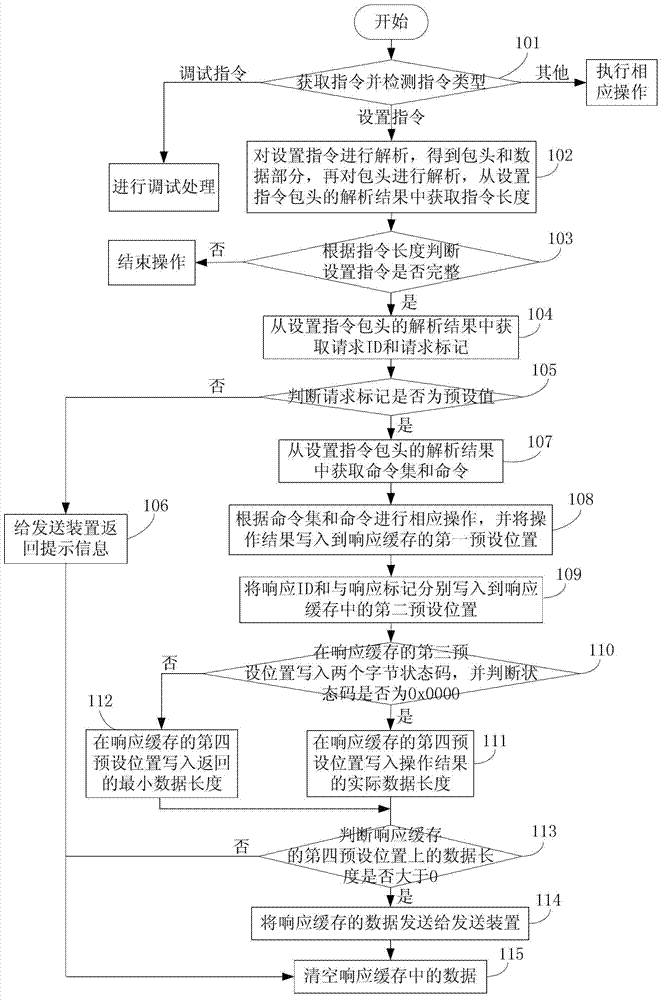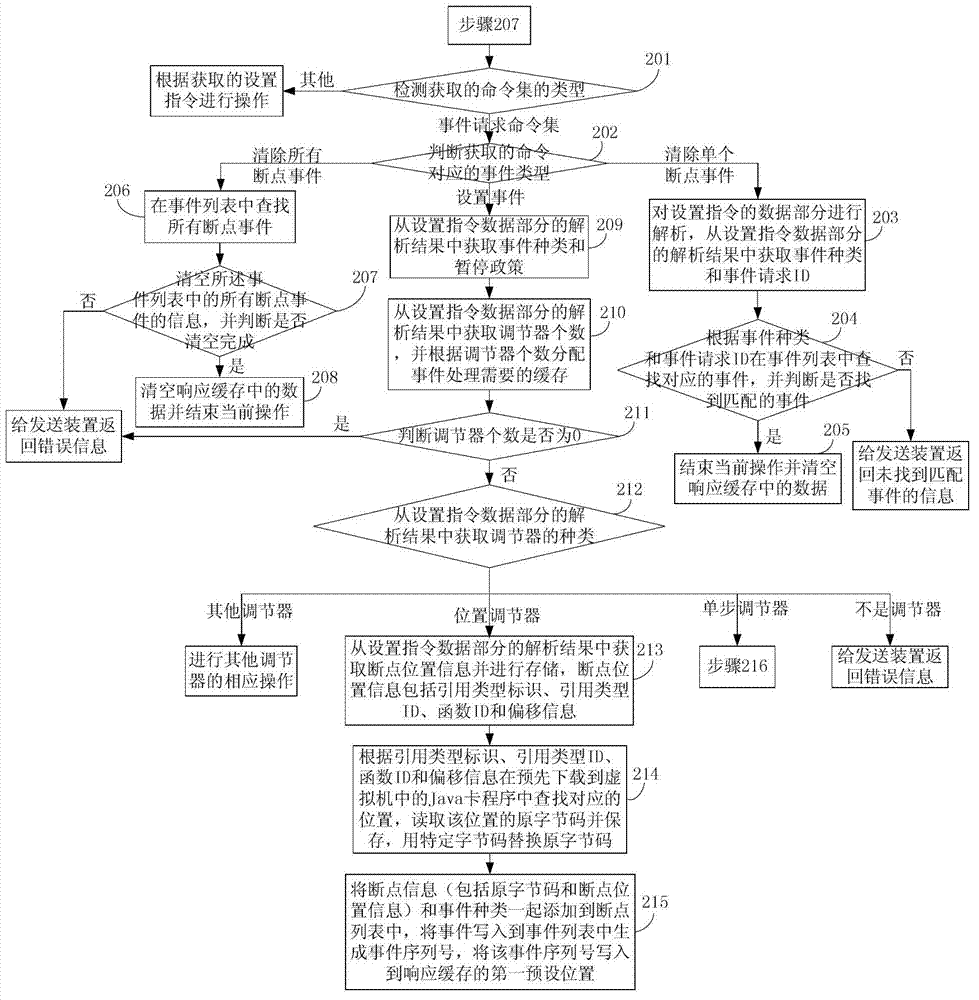Method for processing Java card debugging information
A technology for debugging information and processing methods, which is applied in the field of Java card debugging information processing, and can solve problems such as lack of pertinence, low efficiency, and difficulty in viewing debugging logs
- Summary
- Abstract
- Description
- Claims
- Application Information
AI Technical Summary
Problems solved by technology
Method used
Image
Examples
Embodiment 1
[0089] Embodiment 1 of the present invention provides a method for processing Java card debugging information, such as figure 1 shown, including:
[0090] Step A: Obtain the instruction and detect the instruction type. If it is a setting instruction, execute step B. If it is a debugging instruction, execute step E. If it is other, perform operations according to the instruction;
[0091] In this embodiment, the command obtained can be the command sent by the sending device or the command stored in the command cache; if the format of the command obtained conforms to the first preset format, it is a setting command, if the format of the command conforms to the APDU The format is a debug command;
[0092] Step B1: Analyze the setting instruction according to the preset regulations to obtain the header and data part, analyze the header, and obtain the request ID and request tag from the analysis result of the header of the setting instruction;
[0093] Step B2: Determine whether...
Embodiment 2
[0122] Embodiment 2 of the present invention provides a method for processing Java card debugging information, such as figure 2 shown, including:
[0123] Step 101: Obtain the instruction and detect the instruction type. If it is a setting instruction, execute step 102. If it is a debugging instruction, perform debugging processing. If it is other instructions, perform corresponding operations;
[0124] If it is a setting instruction, before step 101, it also includes: receiving the setting instruction sent by the sending device and storing it in the command cache, and obtaining the instruction in step 101 is: obtaining the setting instruction from the command cache;
[0125] If it is a debugging instruction, the instruction obtained in step 101 is: receiving the debugging instruction sent by the first module;
[0126] In the present embodiment, the type of the detection instruction is realized by the format of the detection instruction; wherein, the debugging instruction is...
Embodiment 3
[0154] The third embodiment is a detailed elaboration of step 108 in the second embodiment, specifically taking the event request command set as an example for illustration, as shown in image 3 with Figure 4 shown, including:
[0155] Step 201: Detect the type of the acquired command set, if it is an event request command set, execute step 202, otherwise operate according to the acquired setting instruction;
[0156] Specifically, in this embodiment, it is judged whether the value of the acquired command set is 15, if yes, it is an event request command set, otherwise it is other command sets, and corresponding operations are performed. Other command sets (such as method command sets, obtaining virtual Virtual machine command set for machine-related information, class command set for obtaining type information, array command set, interface command set, method command set for obtaining function and variable information, variable command set, stack frame command set for obtai...
PUM
 Login to View More
Login to View More Abstract
Description
Claims
Application Information
 Login to View More
Login to View More - R&D
- Intellectual Property
- Life Sciences
- Materials
- Tech Scout
- Unparalleled Data Quality
- Higher Quality Content
- 60% Fewer Hallucinations
Browse by: Latest US Patents, China's latest patents, Technical Efficacy Thesaurus, Application Domain, Technology Topic, Popular Technical Reports.
© 2025 PatSnap. All rights reserved.Legal|Privacy policy|Modern Slavery Act Transparency Statement|Sitemap|About US| Contact US: help@patsnap.com



